Swedish food, now and then
While in Sweden recently I had many memorable meals, in very different settings, and from the fancy to the everyday, from the modern to the traditional or even ancient, and from pure Swedish to authentic Italian via swedish-inspired Thai and swedish-style pizza. During our trip north to the province of Gästrikland we stopped in at the restaurant Furuviks Brygga (Furuvik's Pier), which is a fancy and rather new restaurant located on the Baltic seashore near the town of Gävle (a word that is not related to jävlar) of Botnia, or literally translated 'the bottom sea". Furuviks Brygga is quite isolated and was very hard to find - they certainly need some help with their way-finding signage.
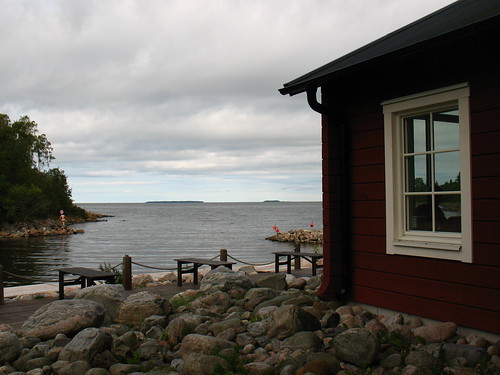
But we found it and despite it being a cloudy, semi-chilly September day in the beginning of the off season (= very few guests at the restaurant), we loved the setting and atmosphere of the building, which was architecturally inspired by old Falu red fishing huts along the coast. We stared out at the horizon and looked for eagles and seals, but only a cormorant and a heron showed up.
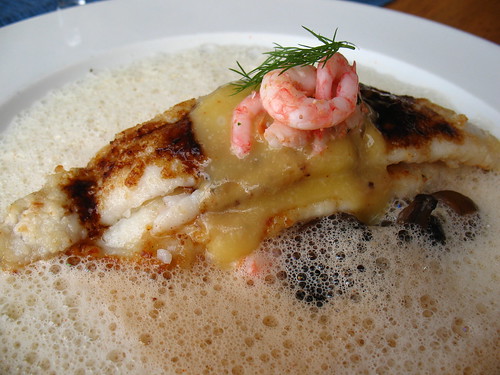
The food was excellent, focused on Swedish delicacies in the nouveau way of cooking them, but the service could have been a lot better. Above is hälleflundra (halibut).
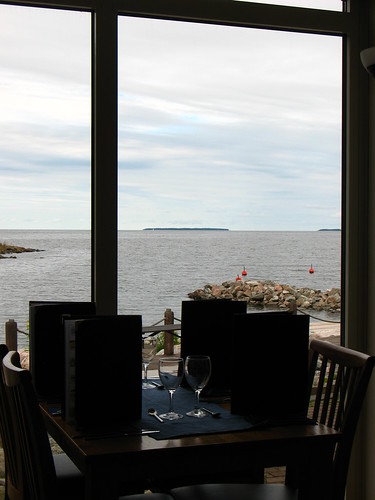
For a near empty restaurant you think you could have gotten your check in a timely manner, and that they could have made sure the glasses on the table were clean. "Oh, our dishwashing machine is having a problem", is not an acceptable excuse.
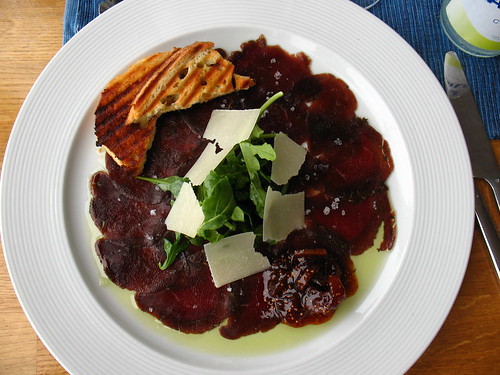
But the reindeer carpaccio (above) and the fish dishes were amazingly good, and fed both the stomach, eye, and soul. I would definitely visit this place again.
A very different place was Sjätte Tunnan (The Sixth Barrel), a medieval-themed restaurant in a medieval cellar in the Old Town (Gamla Stan) of Stockholm. My cousin AI (thanks!) had recommended it as a fun place to take some non-Swedes, so I ended up here with eight non-Swedish friends from all over the world (Belgium, Mexico, Colombia, USA, UK...) during one of the evenings of the scientific conference I attended.
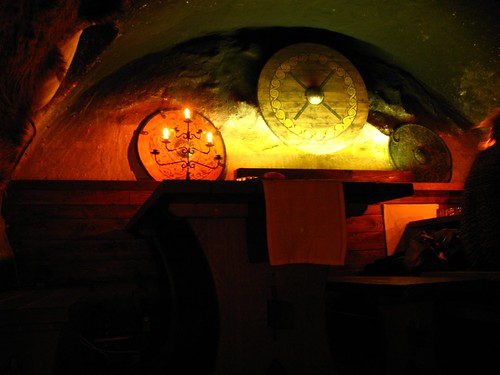
From the street in this old cobble-stone part of Sweden's capital you sneaked down a deep and steep stone stairway and found yourself in a cellar of small interconnected vaulted rooms with thick stone-walls. You could nearly hear the walls talking about times past, from the Hanseatic trading times to the Stockholm bloodbath when the Danish King cut the heads of Swedish noblemen and bishops. That was a long time ago, but it had an enormous influence on Swedish history. The son, Gustaf Eriksson, of one of the killed, got mightily pissed off and went north to Dalarna to engage the grassroots (farmers mostly), and he later became the king Gustav Vasa (famous as Wasa crispbread these days). Gustav Vasa started out as a revolutionary but after getting royal powers, he as many others around the world, turned into a megalomaniac, selfish, and power-hungry dictator (I think).
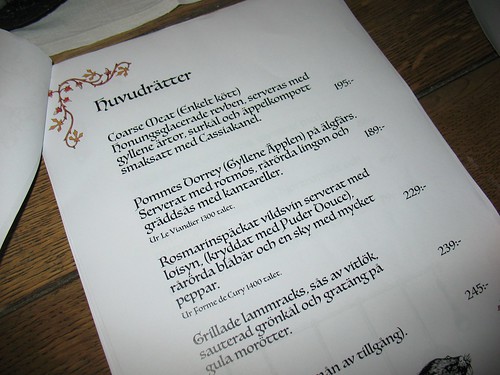
The menu was long, long, long, but with rather few items, since all items were described in detail and there were also introductions and explanations to the purpose of the restaurant - authenticity. They had an English version of the menu too, so I didn't have to translate it all... For many dishes the original publication of the recipe was cited, such as "Le Viander from the 14th century".
The drink menu was regular beer and wine, but they had many special and home-made meads (mjöd) as well (mead is beer made with honey, famously drunk by the vikings), and hard cider from local Swedish apple orchards and breweries. And then the food - only ingredients present at medieval times... so no potatoes, tomatoes orchards and chili peppers (all from the New World and absent from Europe before 1492). Lots of game and wild meat and fish - chicken, wild boar, beef, lamb, trout, and even beaver (when available).
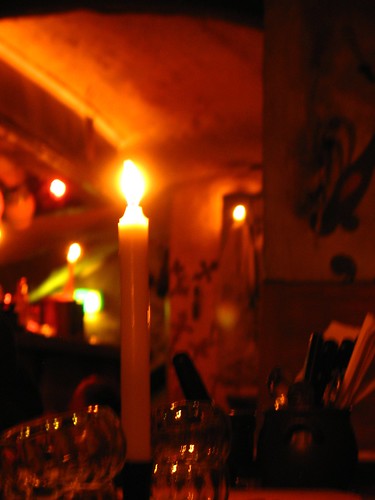
We were sitting along a long rough-hewn table in candle-light on long plank benches - all to create the right atmosphere. On the table were knives and spoons, a rock, and candles. The rock was the salt - if you needed some you just scraped some off with your knife. Forks were not around in medieval times, but you could get one here if you asked, and we did. The waiter was dressed in coarse fabric, maybe linen, and in clothes that looked homemade and were rather holy (as in holes, not religious).
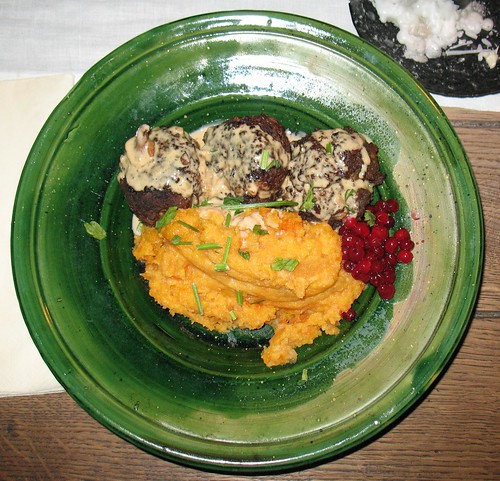
I went for the moose meatballs ('älgbullar') with mashed rutabagas ('rotmos') and lingonberry jam ('lingonsylt'). There were very few greens available with the dishes, because medieval people were very suspicious of greens - they were meat-and-potatoes kind of people (except the potatoes were turnip, cabbage, rutabaga, etc.). The food at this place was great, but not exceptional, and in fact one of my meatballs had so much salt in it it wasn't really edible, but everybody else's food was great and the atmosphere was fascinating. Experiences like this are so much better than reading about history in some old boring schoolbook. I really recommend this restaurant, and especially to Americans that need a dose of hands-on history, since there are no medieval buildings in most of the USA.




No comments:
Post a Comment